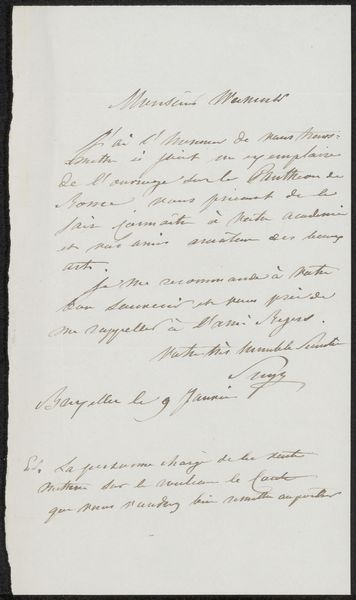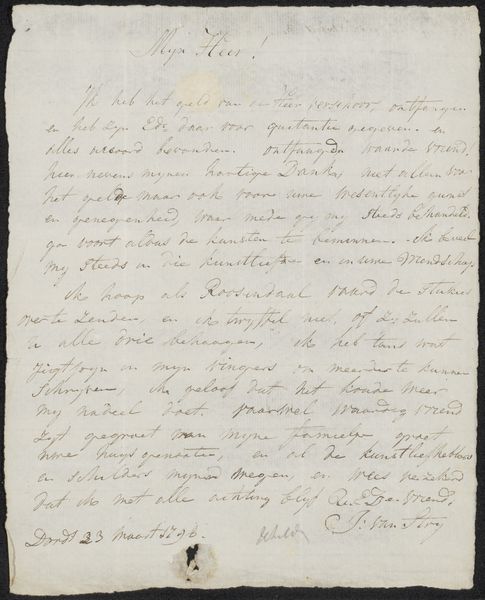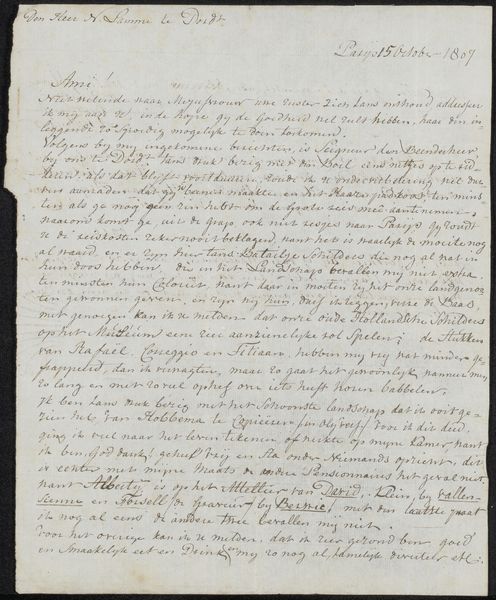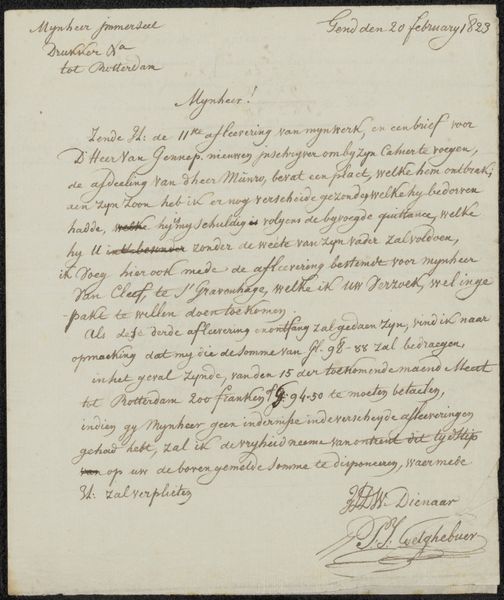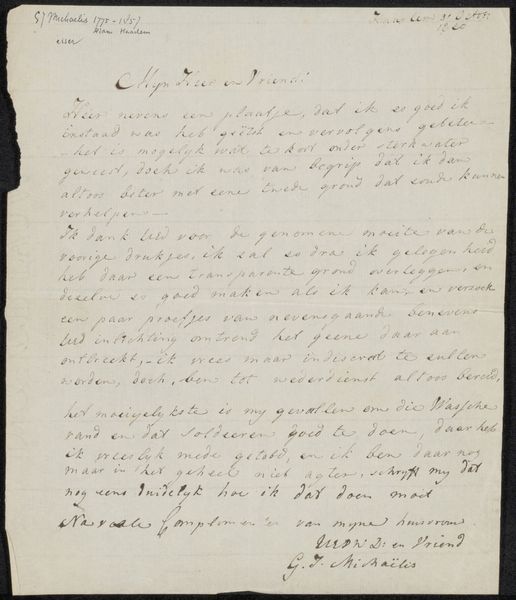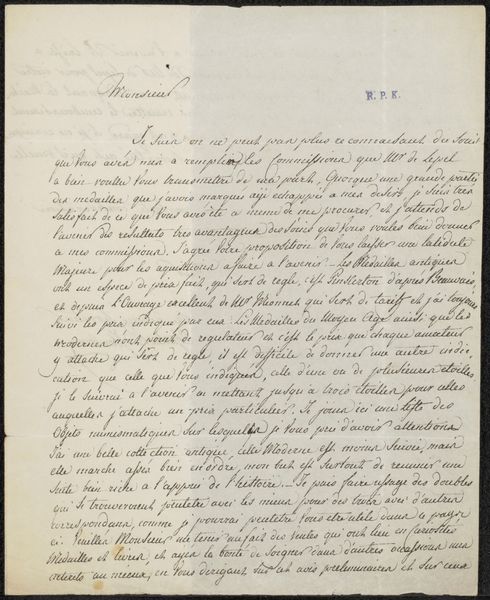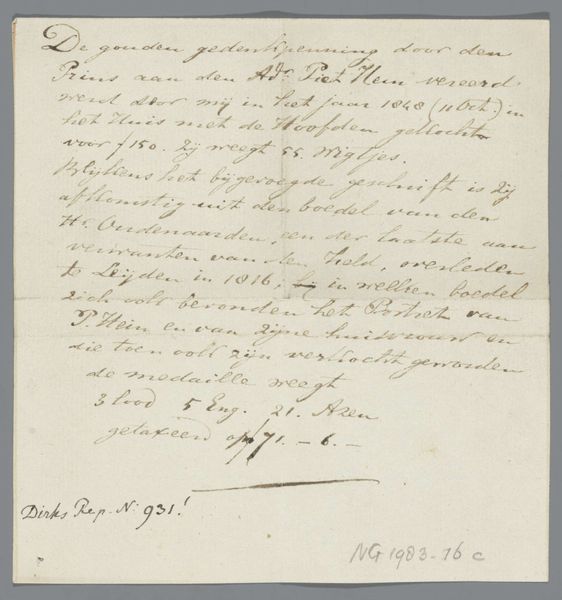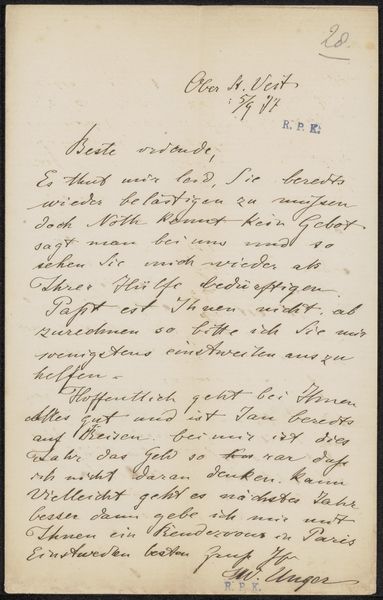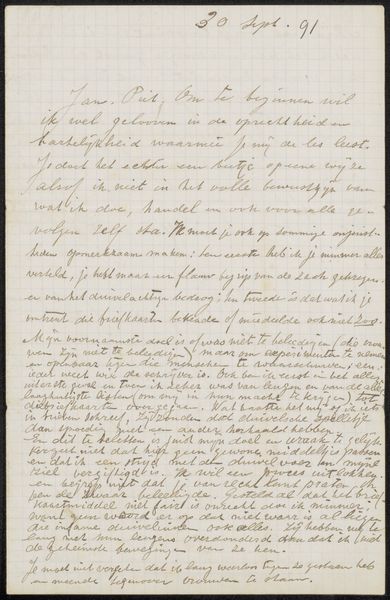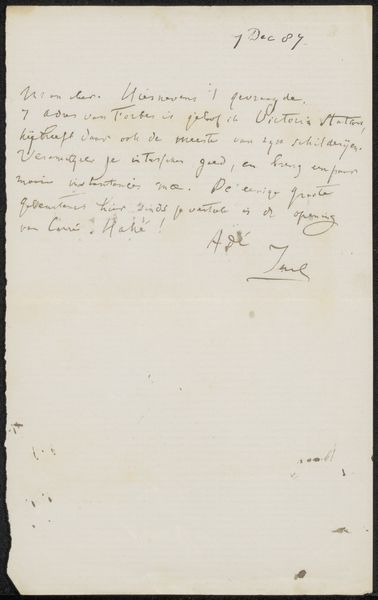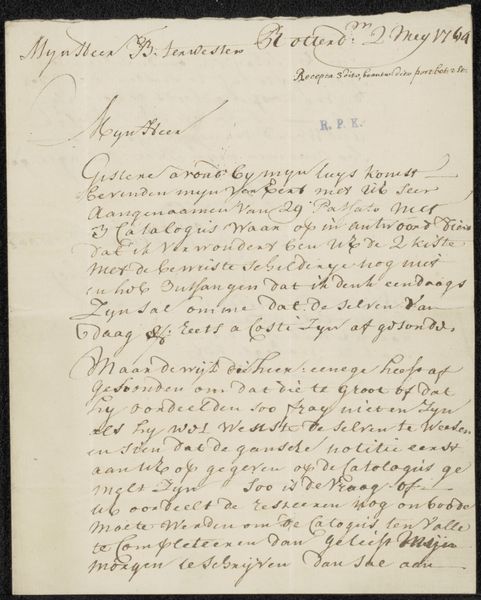
drawing, paper, ink, pen
#
portrait
#
drawing
#
ink paper printed
#
paper
#
ink
#
romanticism
#
pen work
#
pen
Copyright: Rijks Museum: Open Domain
Curator: Here, we have "Brief aan Arnoldus Lamme," or "Letter to Arnoldus Lamme," believed to have been created around 1808 by Abraham Teerlink. It’s an intimate piece rendered in pen and ink on paper, currently held at the Rijksmuseum. Editor: The writing, the paper... it feels fragile. Looking at it evokes such a sense of distance. And even though I cannot read it, there is still something fundamentally, intimately human about this single sheet and the ink scrawls that someone, once upon a time, took care to set to the paper. Curator: Indeed. The work functions as a social object, a residue of correspondence. The embodied labor involved in the penmanship, the type of paper selected, even the act of physically mailing it, speaks volumes. Its survival underscores a web of human actions and valuations over time. Editor: Right, and this medium, this kind of letter-as-artwork, does offer the ability to glimpse at the context through its materiality and contents. The type of ink, the watermark perhaps if one could see it clearly, these elements open the door to conversations about commerce and networks of exchange in the 19th century. Who was Arnoldus Lamme? And what was the social purpose of the note being written? Curator: Precisely. Teerlink composed this letter possibly from Paris. Understanding the romantic artistic circles of the time and the dynamics of artistic exchange between the Netherlands and France could reveal layers about Teerlink’s positioning, network, and aspirations. Further context exists within Romanticism as a larger European phenomenon—a movement which responded to a sense of revolutionary failure by reaching backward towards ideas that preceded modernity. Editor: Absolutely. And while this artwork may be seen primarily for its value in regard to social context and provenance, I still think its accessibility also depends on a more tangible element—its legibility and preservation, ensuring this piece of history can speak materially and directly to future viewers. Curator: It truly brings a tangible sense of history to us today—revealing the complex network of exchanges surrounding Teerlink's artistic practice. Editor: Yes, a valuable glimpse into a past where even mundane communication held potential for preservation and future dialogue.
Comments
No comments
Be the first to comment and join the conversation on the ultimate creative platform.


